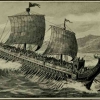A. Characteristics and Role of Educational MIS
Educational Management Information Systems (EMIS) have main characteristics: operating on structured tasks in the educational environment, improving operational efficiency by reducing costs, and providing reports and easy access vital for educational decision-making. The important roles of EMIS in educational organizations include: automating administrative tasks, linking academic planning with control, coordinating various work units, and integrating educational subsystems. EMIS also has technical capabilities such as academic database processing, educational data communication, and decision-support algorithms. The reasons for needing EMIS include the increasing complexity of educational management, improving information technology capabilities, and the need to support managerial expertise in educational institutions.
B. Components of Educational MIS
The components of Educational MIS can be grouped into several parts:
1. Functional: Includes academic administration systems, educational management reporting, student and teacher databases, educational data search, and academic information management.
2. Building Blocks: Consist of educational data input, data processing models, information output, educational technology, supporting hardware, application software, educational databases, and control systems. All these components interact within the educational ecosystem.
3. Physical: Includes hardware supporting educational operations, educational-specific software, academic databases, standard educational operating procedures, and educational IT personnel.
4. Educational Information Quality: Quality educational information must meet components such as basic data (roots), processed information (stems), analytical reports (branches), and must be valid, complete, up-to-date, and academically accurate.
C. Structure of Educational MIS
The structure of Educational MIS can be viewed from several perspectives:
1. Nature: EMIS structure enables the design of physical systems to define the implementation of educational processes.
2. Grouping: Consists of formal systems (based on educational organizational norms) and informal systems (informal educational communication channels). EMIS seeks to combine both.
3. Regional Division: Divided based on:
a. Educational Management Activities: Academic operational control, educational management control, and institutional strategic planning.
b. Educational Organizational Functions: Subsystems such as student admissions, curriculum, learning evaluation, educational finance, and educational human resource development.
c. Conceptual & Physical: Conceptual structure describes the combination of educational functional subsystems, while physical structure refers to applications and modules integrated within the educational system.
D. Approaches to Educational MIS Structure
Approaches to understanding Educational MIS structure include:
1. Based on Educational Operational Elements: Viewed from physical components and educational data processing functions.
2. As Educational Decision Support: Assisting in structured (routine academic) and unstructured (new/complex educational policy) decision-making.
3. Based on Educational Management Activities: Providing different information for three levels: academic operational control, educational management control, and institutional strategic planning.
4. Based on Educational Organizational Functions: EMIS is a federation of functional subsystems within educational organizations.
The development of Educational Management Information Systems (EMIS) has changed decision-making patterns at all levels of educational organizations, requiring educational managers to have accurate and up-to-date information. EMIS is specifically designed with unique characteristics and structures to support operations, management, and decision-making in the educational context, making it the backbone of effective and efficient modern educational management.
Follow Instagram @kompasianacom juga Tiktok @kompasiana biar nggak ketinggalan event seru komunitas dan tips dapat cuan dari Kompasiana. Baca juga cerita inspiratif langsung dari smartphone kamu dengan bergabung di WhatsApp Channel Kompasiana di SINI







